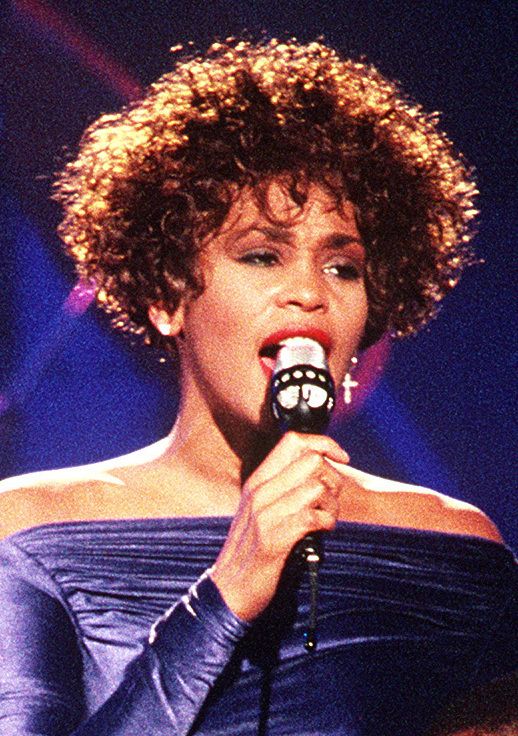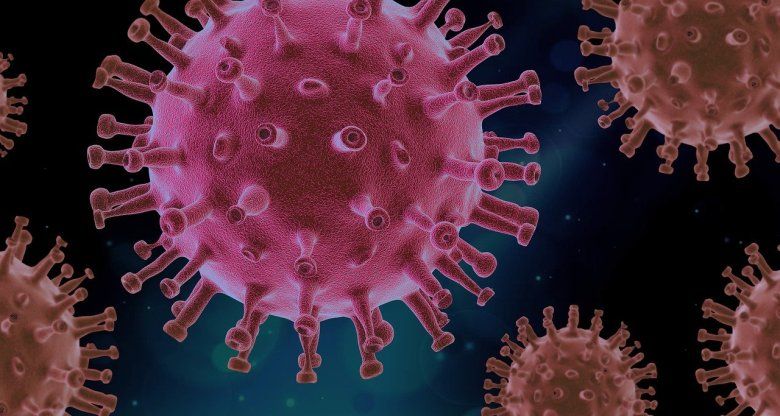Whitney Houston’s estate announces second annual Legacy of Love Gala with BeBe Winans, Kim Burrell

LOS ANGELES (AP) — This year Whitney Houston would have turned 60, and a special celebration to raise money for a good cause is being planned for her birthday.
Houston’s estate, Sony and Primary Wave Music will host the 2nd annual Whitney Houston Legacy of Love on Aug. 9, which will benefit the late singer’s foundation aimed at helping young people.
Houston’s close friends BeBe Winans and Kim Burrell will perform at the gala at Atlanta’s St. Regis Hotel, as will Whitney’s brother, Gary, who toured with her for three decades.
“When I turned 50, Whitney gave me two celebrations — one in Ireland and one in London. I always tell everyone now that one of them was for her,” says Pat Houston, Whitney Houston’s sister-in-law and the executor of her estate. Houston died in February 2012 at age 48. “This year is Whitney at 60 — we’re all looking forward to being a part of the power of love in that room.”
Houston found the Whitney Houston Foundation for Children in 1989 with the goal of empowering youth, providing resources to unhoused children, giving out college scholarships, and raising funds for charities like the Children’s Defense Fund and St. Jude Children’s Research.
A charity auction will raise money for the foundation, which is now called the Whitney E. Houston Legacy Foundation.
“We’re going to auction off a beautiful lavender dress Dolly Parton wore when she sang ‘I Will Always Love You’ at Country Music Television’s ‘100 Greatest Love Songs of Country Music’ special in 2004,” says Pat Houston. “This dress is particularly special because it’s lavender, and lavender is Whitney’s favorite color.”
The song, originally written by Parton, was recorded by Houston and became one of her great, everlasting hits. The Recording Industry Association of America (RIAA) certified it diamond early last year, which means the track has sold and streamed 10 million equivalent units in the United States. It became her first diamond single, and made Houston the third woman to ever achieve diamond-status with both a single and an album, following Mariah Carey and Taylor Swift.
Clive Davis will serve as honorary chairman. Recording Academy President Harvey Mason jr. is scheduled to attend. Also expected are Gamma’s Larry Jackson and Whitney Houston’s musical director Rickey Minor.
“I always tell people, Whitney is the star,” Pat Houston said. “Everybody in that room is royalty, but she’s loyalty — and she’s still showing that.”
The post Whitney Houston’s estate announces second annual Legacy of Love Gala with BeBe Winans, Kim Burrell appeared first on New York Amsterdam News.
NJ Lt. Gov. Sheila Oliver taken to hospital for undisclosed medical care

TRENTON, N.J. (AP) — New Jersey Lt. Gov. Sheila Oliver, who is currently serving as acting governor while Democratic Gov. Phil Murphy is out of the state, has been taken to a hospital for an undisclosed medical issue.
Oliver, 71, was taken to Cooperman Barnabas Medical Center in Livingston and is unable to carry out the duties of acting governor, Murphy’s spokesperson Mahen Gunaratna said in a statement Monday. Under the state constitution, Democratic Senate President Nicholas Scutari will serve as acting governor.
Gunaratna said Oliver was receiving “medical care” but declined to elaborate.
Murphy’s office has said he’s out of the country on a family vacation in Italy, where he owns a home.
Oliver, a Democrat, has served as the state’s second lieutenant governor since 2018. She concurrently serves as the head of the Department of Community Affairs, which coordinates state aid to towns and cities and oversees code enforcement.
In 2010, she became the first African-American woman to serve as speaker of the state Assembly in the state’s history.
The post NJ Lt. Gov. Sheila Oliver taken to hospital for undisclosed medical care appeared first on New York Amsterdam News.
Sponsored Love: Freedom Lodge Spotlights Solutions To Break Cycles Of Trauma
The #1 source in the world for all things Harlem.
How do you help someone heal from a traumatic experience that impacts one’s physical, mental, emotional, and spiritual health? Well-Being and Equity (WE) in the World, a diverse team of change makers, has partnered with Freedom Lodge, as they present solutions to advance transgenerational well-being by exploring Native American practices to break the cycle of trauma.…
The post Sponsored Love: Freedom Lodge Spotlights Solutions To Break Cycles Of Trauma appeared first on Harlem World Magazine.
Cheers, New York Blood Center Launches “Pint For Pint” Campaign With 60+ Local Breweries
The #1 source in the world for all things Harlem.
New York Blood Center (NYBC) is kicking off its second annual “Pint for Pint” campaign on Tuesday, August 1st, 2023. As a part of this campaign, all presenting blood donors will receive a voucher to redeem a free or discounted beverage at their local participating establishment through Sunday, September 10, 2023. The program has doubled…
The post Cheers, New York Blood Center Launches “Pint For Pint” Campaign With 60+ Local Breweries appeared first on Harlem World Magazine.
Seeing the City By Sea – westsidespirit.com
Seeing the City By Sea westsidespirit.com
Brain fog and other long COVID symptoms are the focus of new small treatment studies

WASHINGTON (AP) — The National Institutes of Health is beginning a handful of studies to test possible treatments for long COVID, an anxiously awaited step in U.S. efforts against the mysterious condition that afflicts millions.
Monday’s announcement from the NIH’s $1.15 billion RECOVER project comes amid frustration from patients who’ve struggled for months or even years with sometimes-disabling health problems — with no proven treatments and only a smattering of rigorous studies to test potential ones.
“This is a year or two late and smaller in scope than one would hope but nevertheless it’s a step in the right direction,” said Dr. Ziyad Al-Aly of Washington University in St. Louis, who isn’t involved with NIH’s project but whose own research highlighted long COVID’s toll. Getting answers is critical, he added, because “there’s a lot of people out there exploiting patients’ vulnerability” with unproven therapies.
Scientists don’t yet know what causes long COVID, the catchall term for about 200 widely varying symptoms. Between 10% and 30% of people are estimated to have experienced some form of long COVID after recovering from a coronavirus infection, a risk that has dropped somewhat since early in the pandemic.
“If I get 10 people, I get 10 answers of what long COVID really is,” U.S. Health and Human Services Secretary Xavier Becerra said.
That’s why so far the RECOVER initiative has tracked 24,000 patients in observational studies to help define the most common and burdensome symptoms –- findings that now are shaping multipronged treatment trials. The first two will look at:
— Whether taking up to 25 days of Pfizer’s antiviral drug Paxlovid could ease long COVID, because of a theory that some live coronavirus, or its remnants, may hide in the body and trigger the disorder. Normally Paxlovid is used when people first get infected and for just five days.
— Treatments for “brain fog” and other cognitive problems. They include Posit Science Corp.’s BrainHQ cognitive training program, another called PASC-Cognitive Recovery by New York City’s Mount Sinai Health System, and a Soterix Medical device that electrically stimulates brain circuits.
Two additional studies will open in the coming months. One will test treatments for sleep problems. The other will target problems with the autonomic nervous system — which controls unconscious functions like breathing and heartbeat — including the disorder called POTS.
A more controversial study of exercise intolerance and fatigue also is planned, with NIH seeking input from some patient groups worried that exercise may do more harm than good for certain long COVID sufferers.
The trials are enrolling 300 to 900 adult participants for now but have the potential to grow. Unlike typical experiments that test one treatment at a time, these more flexible “platform studies” will let NIH add additional potential therapies on a rolling basis.
“We can rapidly pivot,” Dr. Amy Patterson with the NIH explained. A failing treatment can be dropped without ending the entire trial and “if something promising comes on the horizon, we can plug it in.”
The flexibility could be key, according to Dr. Anthony Komaroff, a Harvard researcher who isn’t involved with the NIH program but has long studied a similarly mysterious disorder known as chronic fatigue syndrome or ME/CFS. For example, he said, the Paxlovid study “makes all sorts of sense,” but if a 25-day dose shows only hints of working, researchers could extend the test to a longer course instead of starting from scratch.
Komaroff also said that he understands people’s frustration over the wait for these treatment trials, but believes NIH appropriately waited “until some clues came in about the underlying biology,” adding: “You’ve got to have targets.”
___
The Associated Press Health and Science Department receives support from the Howard Hughes Medical Institute’s Science and Educational Media Group. The AP is solely responsible for all content.
The post Brain fog and other long COVID symptoms are the focus of new small treatment studies appeared first on New York Amsterdam News.


